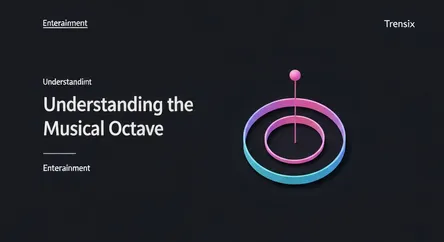Entertainment
Understanding the Musical Octave

Discover the octave, a fundamental musical interval where a pitch is doubled or halved in frequency. Learn why it's a cornerstone of music theory.
What is it?
An octave is the interval between one musical pitch and another with double or half its frequency. In Western music, it spans eight notes in a diatonic scale (e.g., from C to the next C). Notes an octave apart are perceived as being the 'same' note, just at a higher or lower pitch. For instance, the 'A' above middle C is 440 Hz, while the 'A' an octave higher is 880 Hz. This relationship of perceptual sameness, known as octave equivalence, makes it a foundational building block in scales, chords, and melodies worldwide.
Why is it trending?
While a timeless concept, the octave is constantly relevant due to the democratization of music production. With accessible software like DAWs and an increase in online music education via platforms like YouTube and TikTok, more people are learning music theory fundamentals. Content creators and aspiring artists are exploring concepts like octaves to add depth, create fuller sounds by layering melodies in different registers, and build more complex harmonies, keeping this core principle perpetually in discussion.
How does it affect people?
The octave provides a sense of stability and completeness in music. It allows composers to create texture and breadth, for example, by having a bass guitar play a root note while a vocalist sings the same note two octaves higher. This creates a rich, layered sound that feels unified and powerful. For the listener, the octave offers a familiar anchor point within a piece of music, making melodies easier to follow and harmonies feel resolved and satisfying. It's a universal acoustic phenomenon that shapes how we structure and emotionally connect with music.